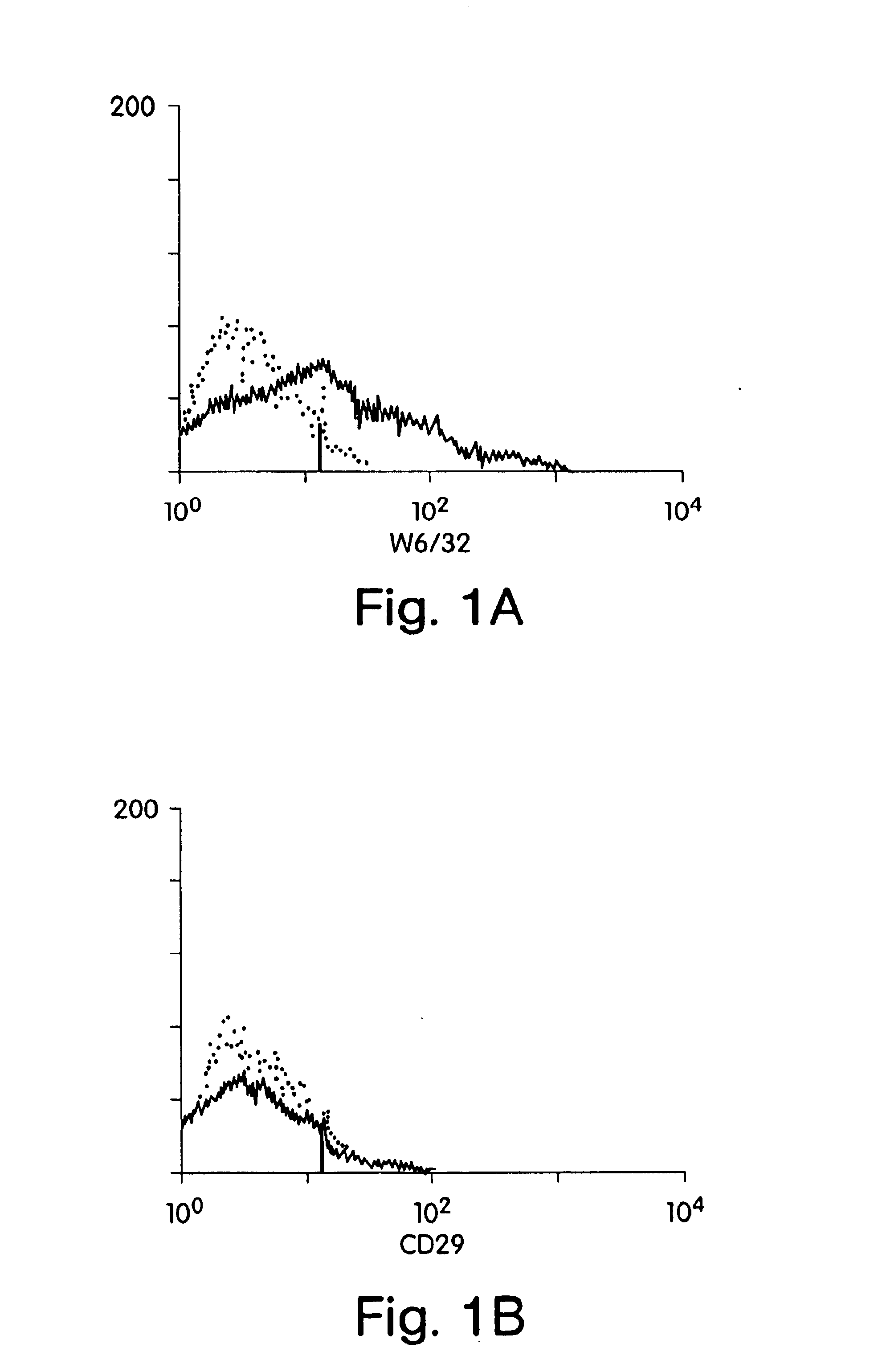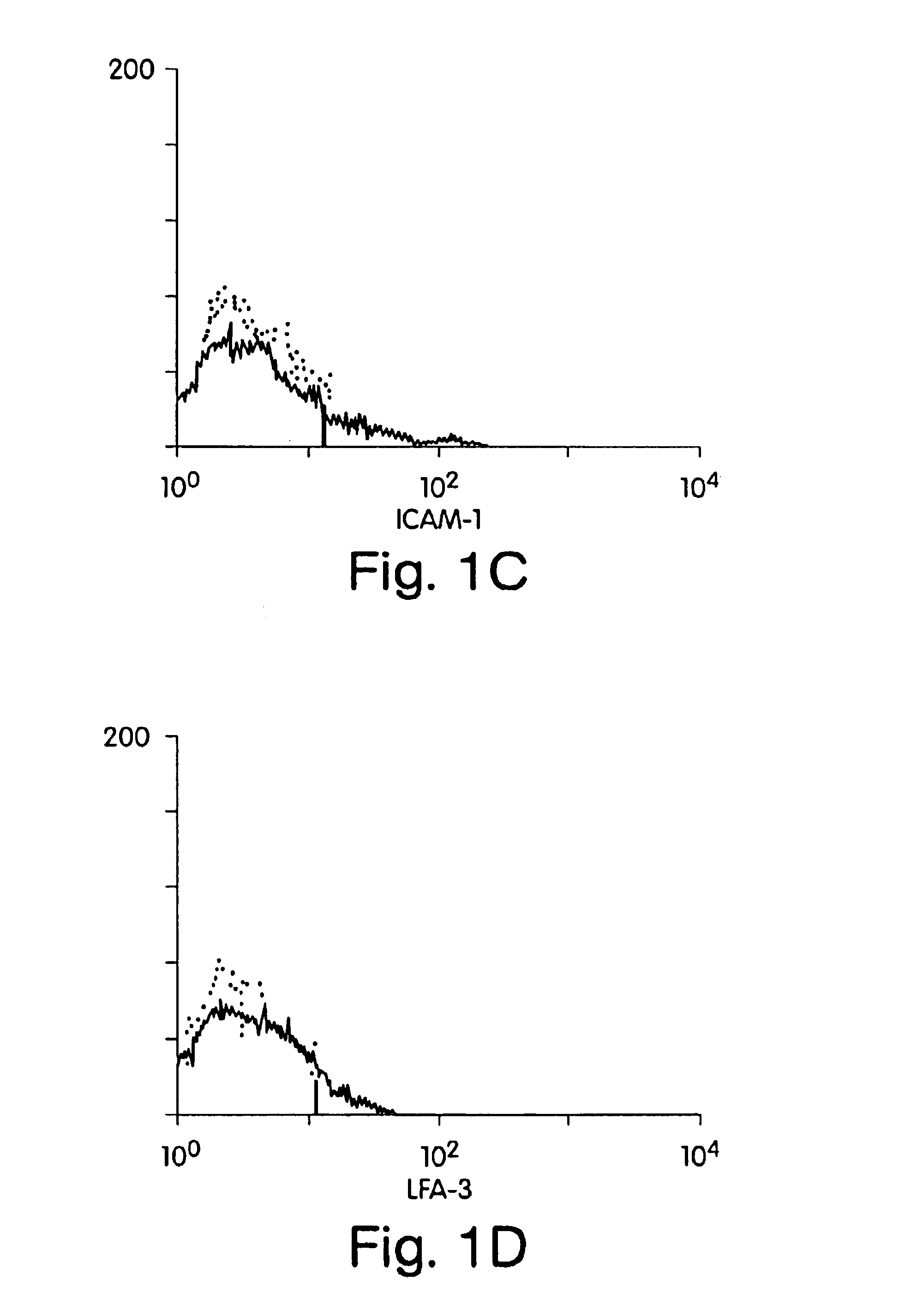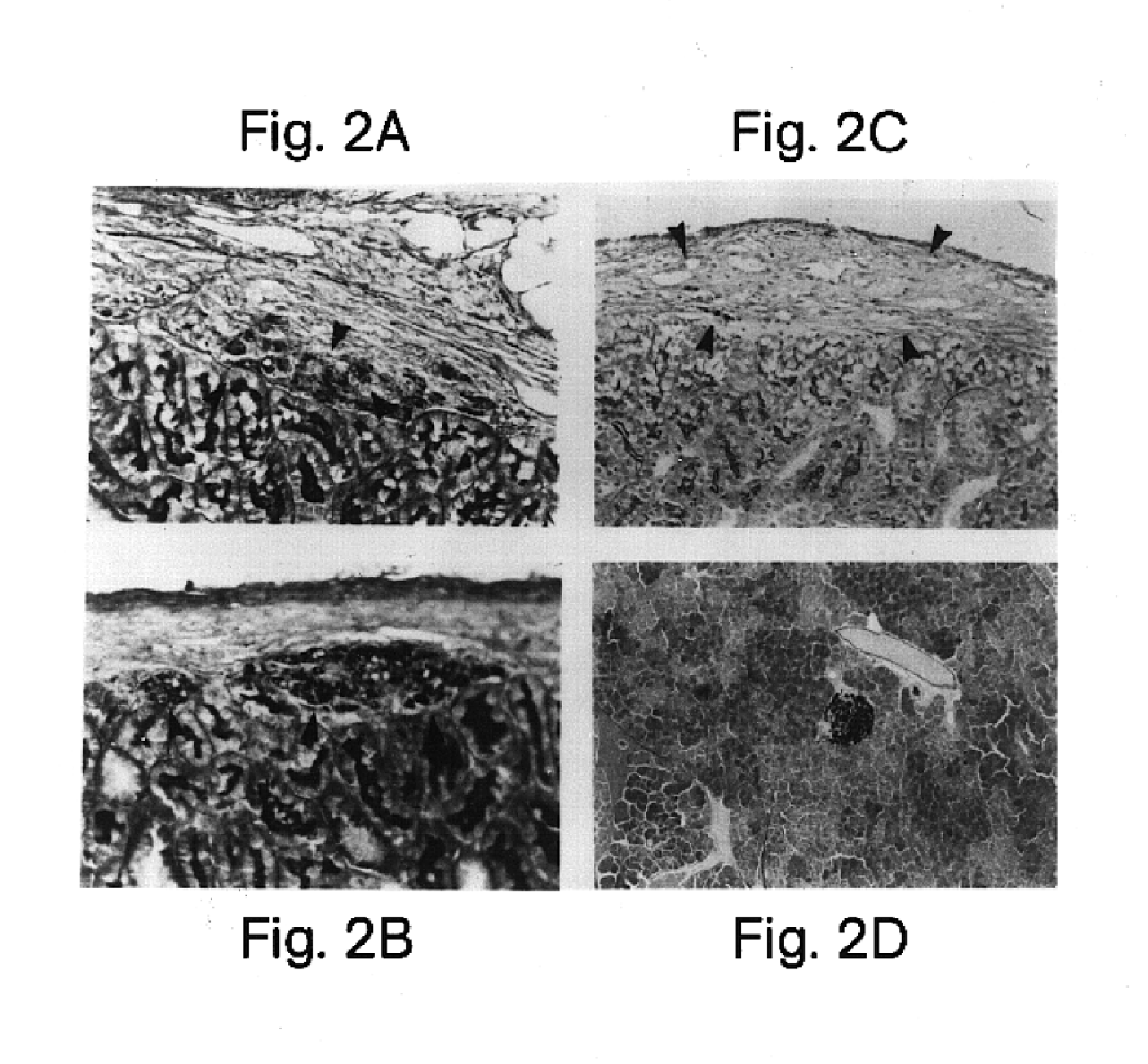Methods for inhibiting rejection of transplanted tissue
- Summary
- Abstract
- Description
- Claims
- Application Information
AI Technical Summary
Benefits of technology
Problems solved by technology
Method used
Image
Examples
example 1
This example involves xenogeneic transplantation of HLA class I positive human islet cells into nonimmunosuppressed Balb / c mouse recipients. Freshly isolated human islets were pretreated prior to transplantation with whole monoclonal antibody or F(ab′)2 monoclonal antibody fragments to conceal (“mask”) donor antigens. F(ab′)2 fragments lack the Fc antibody region, thus circumventing complement-mediated killing after antigen binding. Intact immunoglobulin was used as a control. Human islets were treated with relevant HLA class I monoclonal antibody (W6 / 32) (American Tissue Culture Society) (Barnstable et al. (1978) Cell, 14:9-20) or irrelevant CD29 monoclonal antibody (Coulter Corporation, Hialeah, Fla.). Clean human islet preparations, free of contaminating endothelial and fibroblast overgrowth, are negative for ICAM-1 expression, negative for CD29 expression, have low LFA-3 expression, and are positive for HLA class I antigens (FIG. 1). Therefore, islets, unlike other cytotoxic T-l...
example 2
This example involves the xenogenenic transplantation of rat insulinoma tumor cells (RIN) into nonimmunosupressed Balb / c mouse recipients to investigate the possibility of graft specific tolerance with growth of a transplanted tissue pre-treated with polyclonal F(ab′)2.
RIN tumor cells are an established rat insuloma tumor cell line (Meflasson et al., 1983 J. Biol. Chem. 258:2094-2097). Polyclonal mouse anti-RIN serum was produced and F(ab′)2 antibody fragments were generated as described above in Example 1. As expected, xenogeneic RIN cells (approx. 5,000 cells per recipient) transplanted under the kidney capsule of nonimmunosuppressed BALB / c mice were uniformly rejected when evaluated by histology with aldehyde fuscin staining (n=4) (Table 3). In addition, pretreatment of RIN cells with intact polyclonal mouse anti-RIN antibody, without removal of the complement-fixing Fc region, prior to transplantation also failed to protect grafts from recipient mediated rejection (n=4). In cont...
example 3
The effectiveness of F(ab′)2 HLA class I antibody coating in preventing rejection of non-tumorgeneic human liver cells in xenogeneic transplants was also investigated. Approximately 5,000 fresh human liver cells from the parenchymal tissue of the liver were injected into the subscapular space of the kidney capsules of nonimmunosuppressed mouse recipients. Histological examination using PAS staining of the subscapular sites indicated that all 5 transplant recipients of F(ab′)2-treated liver cells demonstrated easily located viable liver cells at the subscapular renal site 30 days after transplantation. As expected, untreated human liver cells were uniformly rejected in all five mice by day 30 after transplantation.
It is clear from the results of Examples 1 and 3 that the simple interruption of recipient T cell recognition by masking of foreign HLA class I determinants allows prolonged xenograft survival up to 200 days. This new strategy eliminates recipient treatment, thus preserving...
PUM
 Login to View More
Login to View More Abstract
Description
Claims
Application Information
 Login to View More
Login to View More - R&D
- Intellectual Property
- Life Sciences
- Materials
- Tech Scout
- Unparalleled Data Quality
- Higher Quality Content
- 60% Fewer Hallucinations
Browse by: Latest US Patents, China's latest patents, Technical Efficacy Thesaurus, Application Domain, Technology Topic, Popular Technical Reports.
© 2025 PatSnap. All rights reserved.Legal|Privacy policy|Modern Slavery Act Transparency Statement|Sitemap|About US| Contact US: help@patsnap.com



